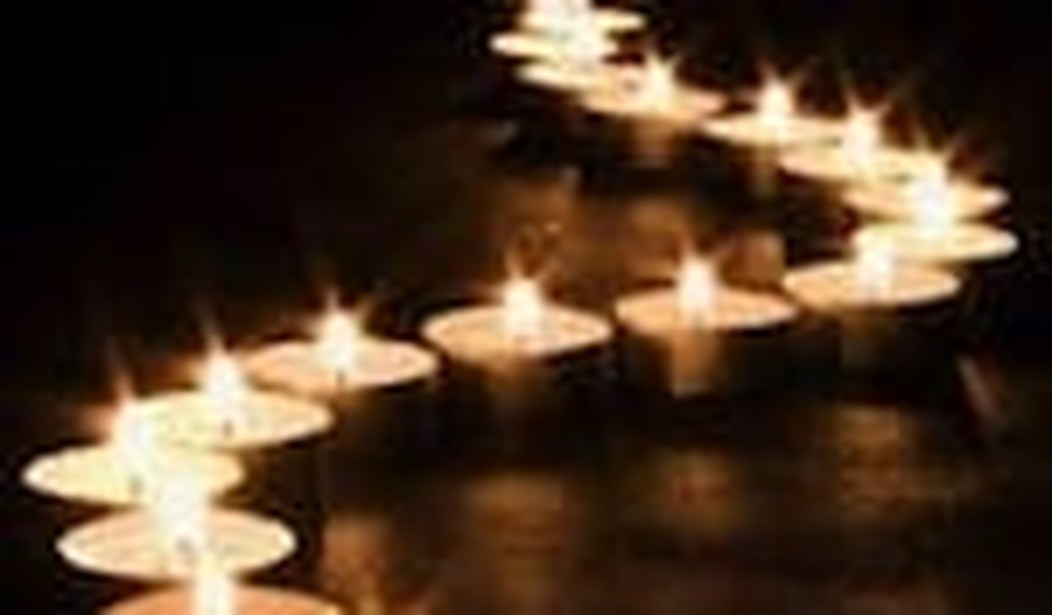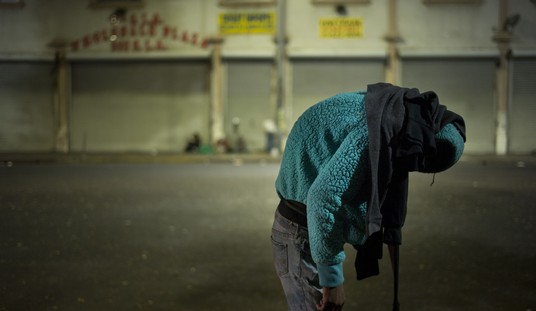After Newtown, President Obama and gun control advocates were shocked to discover — yet again — that sweeping anti-gun legislation would fail miserably. The nation rejected their pointing to guns as the explanation for the massacre. Obama has since been reduced to speechifying and exploiting the parents of Sandy Hook victims; his political arm — Organizing for Action — has barely made a ripple in the political pond.
The people of Newtown have asked the rest of the world to be kind, and to leave them alone.
The Danbury Judicial District state’s attorney, Stephen J. Sedensky III, issued his report on the shooting on November 25, 2013. As one might expect, the facts as revealed in his report bear little resemblance to the media and Obama’s narrative regarding the massacre.
(Media/Obama talking points in bold.)
—————-
Adam Lanza and his mother had strong ties to Sandy Hook Elementary School that caused him to attack there. While Lanza attended the school — he happened to live in the neighborhood — nearly a decade earlier, he had no discernible ties to the school thereafter. It’s possible his mother did a little volunteering at the school when Lanza attended, but she was never employed there. The most likely possibility is Lanza chose Sandy Hook merely because he was familiar with it and it was close to his home.
Lanza used multiple weapons, including an AR-15 and a shotgun, in his attack. He used a high-powered “assault weapon” and “high-capacity magazines.” The only weapon Lanza used to kill and injure all of the victims was a Bushmaster AR-15 pattern carbine. The AR-15 is the most common and popular sporting rifle in America. Its cartridge is, in terms of rifle ammunition, of low to intermediate power, and its 30-round magazines have been standard since the Vietnam era. Lanza’s rifle belonged to his mother and was semi-automatic, an action type more than a century old.
A shotgun was found in Lanza’s car, but it was not used in the attack. Lanza also carried a Sig-Sauer P226 9mm handgun, but did not fire it. Lanza killed himself with a shot to the head from a 10mm Glock 20 handgun, and before attacking the school killed his mother with a Savage .22LR bolt-action rifle he left on the floor of her bedroom.
The police response was very rapid; Lanza had five minutes to kill before shooting himself. The first 911 call to the Newtown police occurred at 9:35:39. The first officer arrived at 9:39, but no officers entered the building until 9:44:47, nine minutes and eight seconds after the 911 call. Lanza began his attack at 9:30 and shot himself at 9:40:03, four minutes and 44 seconds before the first officer entered the building. He had more than ten uninterrupted minutes before he shot himself. If he wished, he could have had at least five minutes more.
While the police response was relatively rapid, as in virtually every school shooting in American history, the police had no active role in saving lives or stopping the shooter.
The high-capacity magazines Lanza used contributed to the death toll. Magazine capacity limits would have saved lives. Lanza had multiple magazines and hundreds of rounds of ammunition. Magazine changes take only a few seconds; experts can do one in a second. Lanza fired more than 137 rounds, requiring at least four magazine changes. Fifteen round magazines would have required nine magazine changes and an extra 36 seconds. This would have made no difference in the death toll at Newtown and elsewhere. Even if Lanza were limited to ten round magazines, there would have been no difference.
The principal heroically attacked Lanza, saving lives. Unfortunately, there was no video recording system in the school. When Lanza shot his way through a window near the locked main doors to enter the school, Principal Dawn Hochsprung and school psychologist Mary Sherlach were in a meeting in a nearby conference room. Hearing the gunfire, they stepped into the hallway and were immediately shot and killed. Two other staff members that stepped into the hallway were shot and wounded, but retreated back into their rooms and survived. Caught in a narrow hallway with no concealment, cover, or means of fighting back, Hochsprung and Sherlach didn’t have a chance. No one abandoned their students and there is evidence the four additional teachers killed tried to shield their students. There is heroism in their devotion, but no evidence any of them had the opportunity to fight back.
The remotely locked doors and video system in the school allowed school staff to promptly call the police and saved lives. The school had video only on the remotely locked front doors, video with no recording ability. The video was displayed on three monitors on the desks of secretaries in the main office near the front door. The doors were entirely glass, and a large glass panel adjoined them. It was this panel Lanza shot out with eight rounds to enter the building, taking only a few seconds.
Lanza could have easily shot out the doors, or used a crowbar to pry them open, again taking only seconds. This is true of the doors of virtually any school. Schools are always vulnerable. For obvious safety reasons they can’t be fortified like prisons.
The office staff had no time to call the police and were forced to hide as best they could. After shooting Hochsprung and Sherlach, Lanza actually entered the office and briefly looked around, but chose not to search more carefully and soon left to enter two classrooms where he killed the children; no one in the office was hurt. It was five minutes and 39 seconds into the attack before the office staff was able to make a 911 call. By then, Hochsprung, Sherlach, and many children were dead or dying.
There were warning signs of Lanza’s intentions. Unfortunately, as is the case with virtually all school attacks, there were no red flags. Lanza was interested in firearms and mass shootings, and was known to be a strange young man with obvious social deficits and obsessive behaviors, but no one — including multiple psychologists over many years — detected the slightest propensity toward violence or intention to attack a school. There was no lack of opportunity for professionals and laypeople to see warning signs, but there simply were none.
From the report:
“It is important to note that it is unknown, what contribution, if any, the shooter’s mental health issues made to his attack on SHES. Those mental health professionals who saw him did not see anything that would have predicted his future behavior.”
Lanza liked violent video games, which contributed to the attack. Lanza did play a variety of video games, some of which were popular war and shooter games, but one he particularly favored — frequently playing a commercial version — was a dance game. Lanza also had images of Lego creations and hamsters. There is no evidence these things, and many more, in any way contributed to the attack.
Lanza was bullied. Extensive interviews of friends, acquaintances, family, school personnel, and mental health professionals are contradictory. Some thought he may have been bullied, but more believed otherwise. While some thought him withdrawn and remote, others found him able to interact appropriately with his peers. A friend of Lanza’s from 2011-2012 said Lanza never spoke of being bullied and said and did nothing that might have indicated his intentions.
More mental health laws and more mental health spending could have made a difference and will make a difference in the future. Obama is now spending significant federal money on mental health services, but there is no evidence any of it would have made a difference, then or now. As I noted in 2011, the political left is largely responsible for the state of the U.S. mental health system since the 1960s, and it remains primarily a creature of the left today.
Involuntary commitment laws are always a matter of balancing individual liberty with public safety. The kinds of changes some on the left have suggested would amount to allowing arrest and indefinite incarceration for thought crime, which is not a power any rational man wants the Obama administration to have. To be sure, some states can use more effective — and constitutional — involuntary commitment laws, but one cannot imprison and “treat” the odd, the unusual, or those who pose no real threat to themselves or others.
Adam Lanza had the full benefit of the mental health system. He was, at various points in his life, prescribed medication. He refused to take it. He was prescribed behavior therapies. He refused to participate. Through all those therapists and all those years, not one considered him a danger to himself or others. Not one saw any sign of what he would eventually do. Not one could present evidence that would have prevented him from owning firearms. He knew right from wrong and functioned in society; he was just odd.
Perhaps the most horrifying realization is that there may be no way to detect and to stop school shooters like Lanza.
What the media has not reported and will never report are the facts about what will work to deter and to stop school attacks: doing away with “gun free” school zones and allowing willing school staff to carry concealed handguns.
Lanza, from the beginning to his suicide, was vulnerable to return fire. In fact, at many points, armed school staff would have had significant advantages in cover, concealment, and superior knowledge of the facility.
If Newtown’s school district publicized that its employees were allowed to carry concealed weapons and that many were — while keeping their names, numbers, and locations secret — it is likely Adam Lanza would never have attacked that school district.
If engaged at or near the point of entry, Lanza would almost certainly have been unable to harm a single child. But because the staff were unarmed, because their only options were trying to run or hide, and because politicians and administrators believed in the magical value of “gun free” school zone signs rather than the unalienable right to self-defense, 26 students and teachers died.
That is the lesson, and tragedy, of Newtown.









Join the conversation as a VIP Member